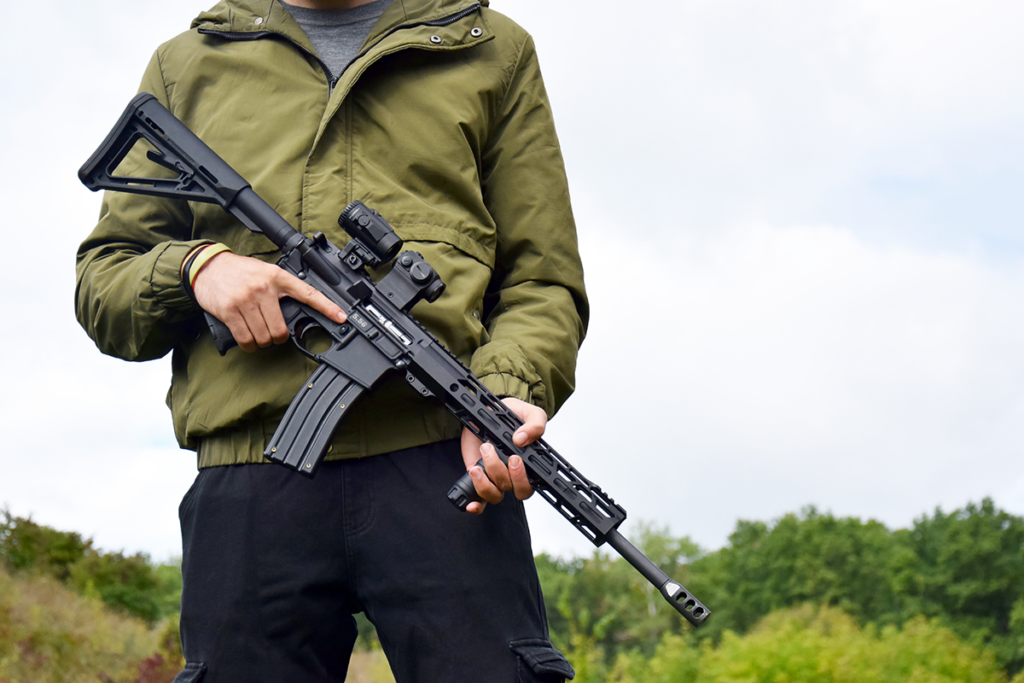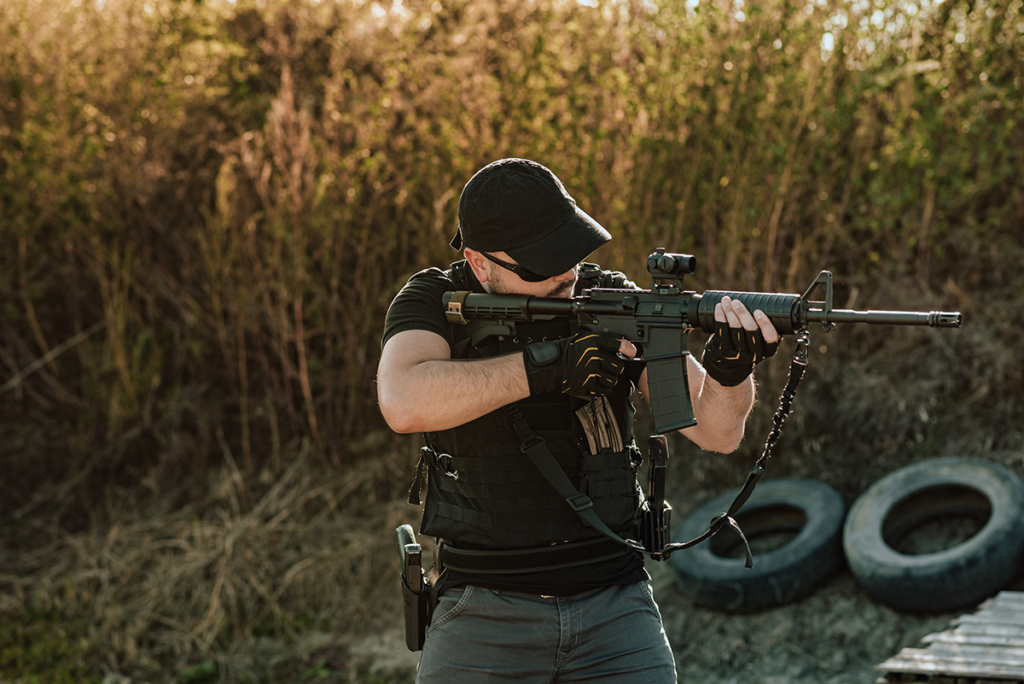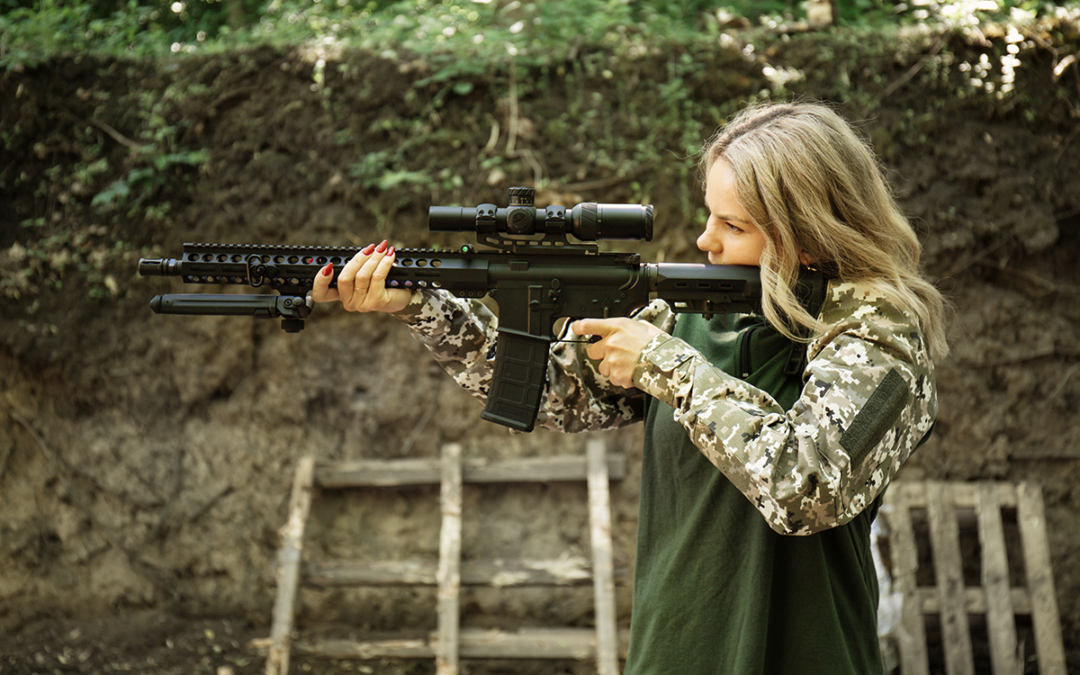Amidst the wide array of firearms available today, the AR-15 stands out as a particularly notable model, capturing the interest and respect of gun enthusiasts, hunters, and those concerned with self-defense. Its unmistakable silhouette is frequently spotted at shooting ranges, a testament to its precision and adaptability. On hunting trips, the AR-15 proves its worth through its reliability and the versatility of calibers suitable for various game. In discussions about self-defense, the AR-15 often emerges as a significant topic, reflecting its effectiveness and the confidence it instills in its users.
But the prominence of the AR-15 is not just about its capabilities or design. It’s about the deeper story it tells—a story of innovation, evolution, and the changing dynamics of firearm use and ownership. What does AR stand for in AR-15? How did this rifle transition from its military roots to become a staple in civilian life? This post delves into these questions, aiming to provide a comprehensive understanding of the AR-15, its history, its varied applications, and why it continues to be a revered and sometimes debated firearm in modern society.
In unraveling the story of the AR-15, one gains not just insight into a rifle, but a broader understanding of the multifaceted nature of firearms in contemporary society. Whether seen through the lens of sport, utility, or self-protection, the AR-15 stands as a remarkable example of modern firearm engineering and a touchstone in the ongoing conversation about rights, responsibilities, and personal safety.
The AR-15
The AR-15 is an exemplar of semi-automatic rifle engineering, designed to fire one round per trigger pull while enabling the shooter to make quick follow-up shots. This capability is central to its functionality, offering a balance between control and firepower that is highly valued by enthusiasts and professionals alike. The rifle’s mechanism is a marvel of mechanical precision, ensuring reliability and performance under various conditions, whether it be the controlled environment of a shooting range or the demanding circumstances of outdoor pursuits.
Originally developed with military applications in mind, the AR-15 has transitioned seamlessly into the civilian sphere, reflecting its inherent versatility. This transition is not merely about the change in users but also about the rifle’s ability to adapt to different legal frameworks and societal needs. The civilian versions of the AR-15, while maintaining the core characteristics of the original design, have been modified in various ways to comply with regulations and to cater to the preferences of a diverse user base.
The adaptability of the AR-15 extends beyond its legal and structural modifications. The platform itself is designed for customization, allowing users to tailor their rifles to specific requirements or preferences. From barrel length and calibers to stock types and accessory rails, the options for personalization are vast, making each AR-15 as unique as its owner. The AR-15 is not just a testament to the ingenuity of its original designers but also to the ongoing dialogue around responsible gun ownership and the role of firearms in contemporary life.

The “AR” in AR-15
The “AR” in AR-15 often becomes a subject of misconception, leading some to mistakenly associate it with terms like “assault rifle” or “automatic rifle.” However, the truth lies in the rifle’s lineage, with “AR” standing for “ArmaLite Rifle.” This designation honors the firearm’s original developer, ArmaLite, a company that laid the foundational blueprint for the AR-15 in the 1950s. The AR-15’s journey from a concept in the minds of ArmaLite’s engineers to a prominent fixture in the world of firearms is a narrative of innovation, quality, and adaptability.
ArmaLite’s role in the rifle’s history goes beyond mere nomenclature. The company’s vision and engineering prowess were pivotal in crafting a firearm that combined lightweight construction with robust performance. This blend of features was revolutionary at the time and set the stage for the AR-15’s widespread adoption and enduring popularity. The evolution of the AR-15, under the stewardship of various manufacturers beyond ArmaLite, reflects the rifle’s ability to meet the ever-changing demands and preferences of shooters worldwide, further solidifying its status as a versatile and reliable choice in the firearms community.
The Rifle’s Evolution and Variants
Over the years, the AR-15 has seen production by numerous companies, each contributing their unique touch to this classic model. Prominent manufacturers like Colt, Smith & Wesson, and Ruger have expanded the AR-15 family, offering an array of models that cater to various preferences and requirements. This wide selection ensures that whether one seeks a lightweight option for hunting or a robust tactical weapon, the perfect AR-15 variant is within reach.
Among the plethora of AR-15 variants, models like the M4 Carbine, the M16 rifle, and the AR-10 rifle stand out. Furthermore, these rifles come in different calibers, with popular options including the .223 Remington, .300 Blackout, and the standard 5.56 NATO. This diversity in models and calibers underscores the AR-15’s adaptability to different shooting disciplines and uses.
Understanding Tactical Weapons
Within the broader category of firearms, AR-15 rifles often fall under the classification of tactical weapons. These are tools designed to enhance an operator’s effectiveness, especially in combat scenarios. Tactical weapons aren’t limited to firearms; they also include knives, categorized into fixed-blade and folding, and impact weapons like clubs, batons, or stun guns.
Tactical weapons, including firearms like the AR-15, are tailored for critical situations, offering a strategic advantage in close-quarters combat or self-defense scenarios. Their design focuses on reliability, ease of use, and effectiveness, making them a popular choice among law enforcement, military personnel, and civilians alike.

Embracing Versatility with the AR-15
Embracing the AR-15’s versatility is like getting to know a multi-talented friend who’s always surprising you with new skills. It’s not just a rifle; it’s a platform that’s ready to adapt, whether you’re into hunting, competitive shooting, self-defense, or if you just love the art of firearms. This adaptability is what keeps the AR-15 not just relevant but a favorite in the ever-evolving world of firearms.
Imagine a rifle that you can tweak to fit exactly what you need. Need a lighter trigger for precision shooting? You got it. Prefer a heavier stock for stability? No problem. The AR-15 is like your personal firearm butler, ready to adjust to your specifications. This level of customization is a big part of why so many people don’t just use an AR-15; they form a bond with it.
But the AR-15’s charm isn’t just in its adaptability. It’s in how it brings people together. From new shooters at the range to seasoned hunters in the wild, the AR-15 is a common thread in a community that values tradition, innovation, and the simple joy of a well-made rifle.
In short, the AR-15 isn’t just a piece of machinery. It’s a testament to human ingenuity, a tool that molds to your needs, and a bridge that connects diverse groups of firearm enthusiasts. It’s a platform that respects the past while continuously evolving, ready to meet the future of shooting sports, defense, and outdoor adventures.
The AR-15’s journey from a military-designed rifle to a beloved civilian firearm is a narrative of innovation, versatility, and enduring appeal. Understanding its origins, design, and the spectrum of available variants provides a comprehensive view of why the AR-15 continues to be a preferred choice for many in the firearms community. With its rich history and ongoing evolution, the AR-15 remains a testament to the intricate blend of tradition and innovation in the world of firearms.

